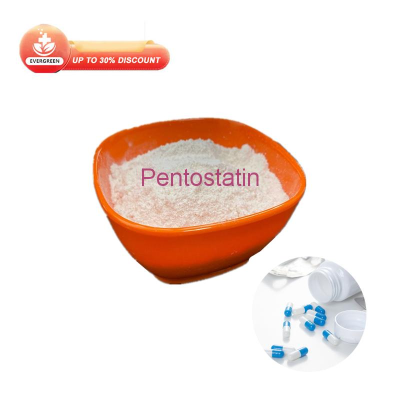-
Categories
-
Pharmaceutical Intermediates
-
Active Pharmaceutical Ingredients
-
Food Additives
- Industrial Coatings
- Agrochemicals
- Dyes and Pigments
- Surfactant
- Flavors and Fragrances
- Chemical Reagents
- Catalyst and Auxiliary
- Natural Products
- Inorganic Chemistry
-
Organic Chemistry
-
Biochemical Engineering
- Analytical Chemistry
- Cosmetic Ingredient
-
Pharmaceutical Intermediates
Promotion
ECHEMI Mall
Wholesale
Weekly Price
Exhibition
News
-
Trade Service
Recent popular reports from Yimaike ★ Invitation to the event2021 Oncolytic Virus Drug Development Forum will open in Shanghai ★ The financing has reached hundreds of millions in half a year, and the oncolytic virus has entered the fast laneYimai New Observation Click on the picture and register now July 16, 2021 /MedClub News/--Clinical-stage immuno-oncology company Medicenna Corp recently announced the publication of its peer-reviewed preclinical data of MDNA109, the first-generation engineered human IL-2 developed by Medicenna
.
The company's IL-2 Superkine platform forms the basis of MDNA11
.
This paper entitled "Oncolytic Adenovirus Coding for a Variant Interleukin 2 (vIL-2) Cytokine Re-Programs the Tumor Microenvironment and Confers Enhanced Tumor Control" was published in Frontiers in Immunology and was sponsored by the University of Helsinki (Finland) and other institutions.
Researchers write independently
.
According to the preclinical results of the pancreatic cancer model published by Medicenna, MDNA109 armed with oncolytic adenovirus induces an excellent anti-tumor response, and has the trend of complete tumor regression, improved survival rate and long-term immune memory effect
.
The data highlights the ability of the MDNA109 armed oncolytic virus to reshape the tumor microenvironment from immunosuppressive to pro-inflammatory microenvironment, and its potential to treat immune "cold" tumors (such as pancreatic cancer)
.
Engineered IL-2 IL-2 targeted therapy with a special mechanism is one of the earliest cancer immunotherapy, which can promote the production of activated immune cells, immune memory cells and immune tolerance
.
However, if IL-2 over-stimulates immune cells, it may cause an imbalance in the ratio of effector T cells and regulatory T cells (Treg, immunosuppressive), which is related to the nature of IL-2 receptors
.
The IL-2 receptor is composed of three subunits, namely IL-2Rα (CD25), IL-2Rβ (CD122) and IL-2Rγ (CD132)
.
The arrangement of these subunits in the receptor determines the receptor's response to IL-2 signaling
.
When the three are all together, the receptor will bind IL-2 with higher affinity
.
This kind of receptor arrangement is usually found on regulatory T cells, which can inhibit the immune response
.
There is a receptor consisting of β and γ subunits on naive T cells and NK cells, which can stimulate these immune cells to find and kill cancer cells after being activated by IL-2 signals
.
MDNA109 is an IL-2 super factor that preferentially drives the expansion and response of effector T cells and natural killer (NK) cells instead of Treg cells
.
It is the only IL-2 under development with a unique mechanism.
Its high affinity for CD122 makes it effective against NK cell anergy (depletion) that often occurs after cancer immunotherapy
.
Its binding efficiency with IL-2Rβ (CD122) is as high as 200 times, which greatly improves its ability to activate and proliferate immune cells required for anti-cancer, and enhance the ability of T cells to fight cancer
.
MDNA11 is the third-generation IL-2 superfactor, formed by the fusion of IL-12 and human recombinant albumin
.
This fusion can extend the half-life of the drug and minimize the dose requirement without reducing the efficacy and safety of the drug
.
It has higher affinity for receptor variants including IL-2Rβ (but not IL-2Rα)
.
In this way, it will only activate the immune response to attack cancer cells, rather than suppress the immune response
.
▲ The birth of MDNA109 (left) and MDNA11 (right) (picture source: Medicenna official website) In addition, MDNA109 is combined with checkpoint inhibitor (CPI) antibodies against PD-1 and CTLA-4, synergistically in a mouse model of colon cancer It also shows excellent synergy in its anti-tumor effect
.
▲ When MDNA109 is combined with anti-PD-1 (left) and anti-CTLA-4 (right), Dr.
Fahar Merchant, President and CEO of Medicenna, said: "This publication externally verifies that MDNA109 is armed as a substitute for native IL-2 Oncolytic viruses, their superiority and ability to reprogram the tumor microenvironment
.
These findings highlight another use of the MDNA109 platform, which is a core component of our BiSKITsTM and MDNA11 projects
.
We look forward to the end of the fourth quarter of 2021 Share the preliminary safety, PK/PD, and biomarker results of the MDNA11 Phase 1/2 trial
.
In addition, we will continue to use the versatility of MDNA109 and our Superkine platform to build a leukocyte-based approach for subsequent partnerships and collaboration opportunities The powerful treatment pipeline of interleukin
.
"For details of the relevant results of the paper, scan the QR code for a complete reading.
In short, these results highlight the prospective therapeutic potential of the MDNA10 virus in the treatment of immunosuppressive tumors (such as pancreatic cancer)
.
In this paper, MDNA109 is called "variant IL-2", "IL-2"-2 variant", "vIL-2" or "vIL2"
.
It is worth noting that Medicenna's main long-acting IL -2Superkine drug candidates MDNA11 from MDNA109 platform, is expected to be the third quarter of 2021 in the treatment of the first patient in the phase 1/2 clinical studies
.
these mutations further enhance MDNA11 selectivity for tumor-killing immune cells
.
references: 1.
https :// -tumor-microenvironment-in-pancreatic-cancer/YiMike has always been committed to original news reports such as cutting-edge technology, industry trends, and industry insights in bio-innovative drugs.
The number of high-end matrix users in all media reaches 160,000+, of which industrial users account for more than 50 %, about 30% of scientific research and clinical users, and more than 5% of users of investment institutions
.
In
order to promote interactive communication in industry segments, we have established a number of professional WeChat groups, welcome to scan the QR code to add groups
.







